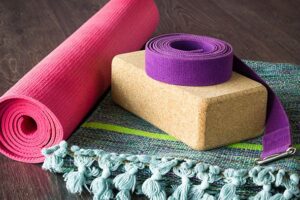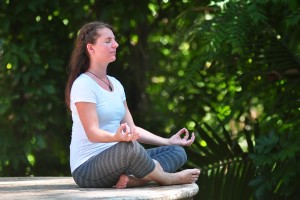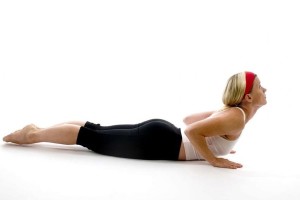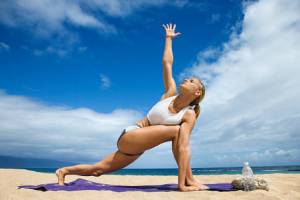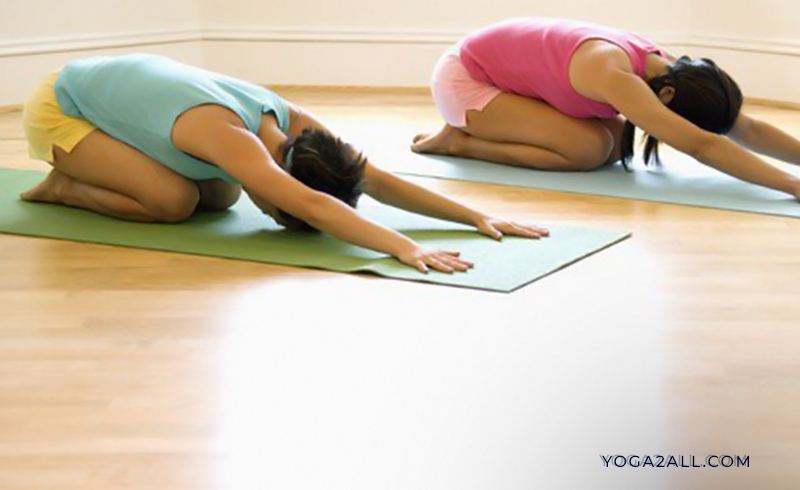
For many, back pain is deemed a universal experience. People the world over, regardless of age or activity level are likely to have experienced back pain at one point or another. While some back pain disappears as quickly as they come, others linger for weeks or even months. In the United States alone, a staggering 80 percent of the population suffer from back pain. In fact, it ranks second in the most common reasons for doctor visits, following respiratory infections and cough.
While some rare cases of lower back pain will require surgical intervention, most will respond to conservative treatment alternatives including yoga for back pain.
Relieve spine pain and pressure and optimize spine health by incorporating the following yoga for back pain, also you can use some top quality back brace for lower back pain including your practice:
- Balasana (Child’s Pose)
Child’s Pose is a great yoga for back pain and must be included in your yoga routine. The child’s pose is often utilized as the resting position between more challenging yoga poses. To execute the pose, start with your hands and knees.
- Spread the knees wide apart while ensuring the big toes are touching and the buttocks are resting on your heels.
- Sit up straight as you lengthen your spine.
- Drape your torso between your thighs as your bow forward and exhale.
- The chest should rest on top or between your thighs.
- If you are already flexible enough, you can allow your forehead to touch the floor.
- The arms should be kept long and extended with the palms facing down.
- To ensure the buttocks are in contact with the heels, press back slightly using your hands.
- Gently release the pose by using your hands to walk your torso upright as you sit back on your heels.
- Marjaryasana (Cat Pose)
Cat Pose is one of the most reliable yoga for back pain. The cat pose is known to provide a gentle massage both to the belly organs and the spine.
- Start the pose by getting your knees and hands in a “tabletop” position.
- Ensure the knees are below the hips and the elbows, shoulders, and the wrist are not only in line but also perpendicular to the floor.
- The head should be in a neutral position and the eyes should be looking at the floor.
- Round the spine toward the ceiling as you exhale to ensure the knees and shoulders are in position.
- Release the head toward the floor without forcing the chin to the chest.
- End the pose by inhaling as you return to the neutral “tabletop” position.
- AdhoMukhaSvanasana (Downward-Facing Dog)
Considered one of the most recognized among the yoga poses the best of all yoga for back pain, downward-facing dog stretches the whole body while building strength.
- Begin this pose on your hands and knees.
- Ensure the wrists are aligned directly under the shoulders and the knees should be directly under the hips.
- The fold of the wrist should be parallel with the yoga mat’s top edge.
- Stretch the elbows while making sure the upper back is relaxed.
- Spread the fingers wide while pressing through the knuckles and the palms while ensuring the weight is evenly distributed across both hands.
- Tuck the toes and lift the knees off the floor as you exhale.
- Bring the body into an “A” shape.
- Release the pose by gently bending your knees and coming back to your hands and knees as you exhale.
- Virabhadrasana I (Warrior I Pose)
Warrior I is beyond doubt the best yoga for back pain. Named after the mythological Hindu warrior Virabhadra, this pose has been known to build stability, power, and focus.
- Begin the pose with Tadasana or the mountain pose.
- Stand with the feet hip-distance apart and the arms on the sides.
- Breathe deeply as you calm your mind and draw awareness inward.
- Then turn to the left.
- Exhale as you draw your feet 4 to 5 feet apart.
- As the right foot is out 90 degrees, point the toes on the mat’s top.
- Pivot the left foot inwards at a 45-degree angle.
- Ensure the front heel is aligned with the back foot’s arch.
- The pelvis should be turned toward the front of the mat.
- While pressing the weight using the left heel, bend the right knee over the right ankle as you exhale. The shin should be perpendicular to the floor.
- Reach up strongly using the arms as your tilt the head gently and gaze at the thumbs.
- Keep the back leg straight while pressing down through the back foot’s outer edge.
- Hold the position for at least one minute.
- Release the pose by straightening the front leg and pressing the weight through the back of the heel.
- Salabhasana (Locust Pose)
This yoga for back pain is an intermediate backbend that effectively strengthens and tones the entire back.
Since it is often used as a foundation for deeper backbends, it is often utilized in preparation for other poses like the UrdhvaMukha (Upward Dog), Dhanurasana (Bow), and the UrdhvaDhanurasana (Wheel Pose), among others.
- Start executing the Locust Pose by lying on the stomach with the arms placed at the sides.
- The forehead should rest on the mat.
- Extend the legs straight and hip-width apart while ensuring the heels are not rolled outward or inward.
- Weight should be evenly distributed on the top of both feet.
- Raise the head and look forward as you inhale.
- Lift the chest and arms as you exhale.
- The arms should be kept alongside the body and the palms should be facing down.
- As you lift your upper spine, reach the arms toward the feet.
- To lift the legs toward the ceiling, the inner thigh should be used.
- The weight should rest on the belly, front pelvis, and the lower ribs.
- The chest should be lifted when widening across the collarbones.
- The shoulder blades should be drawn into the back ribs while being extended away from each other.
- Keep the pose for a minute.
- Gently release the body to the ground upon exhaling.
The above-described yoga for back pain not only help you combat against back pain, but also help you fight against other issues, for more you can see more yoga poses and their benefits.


